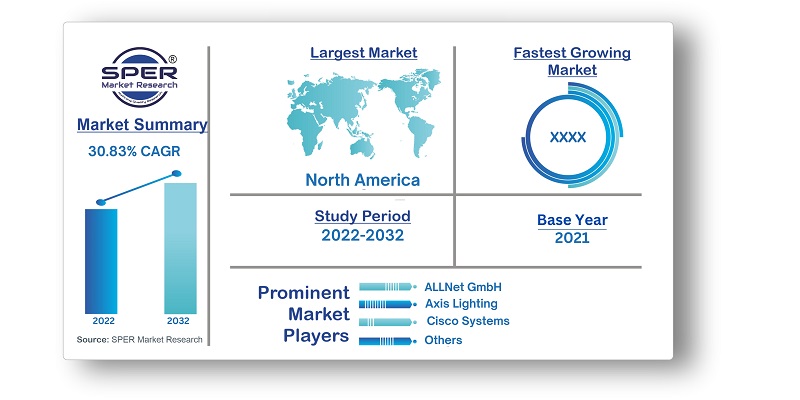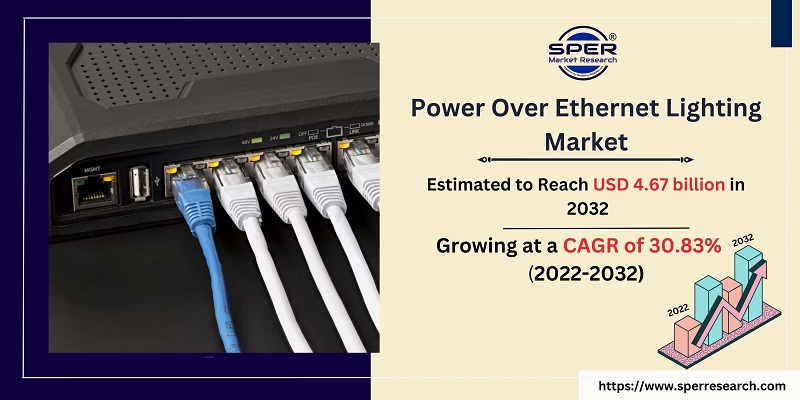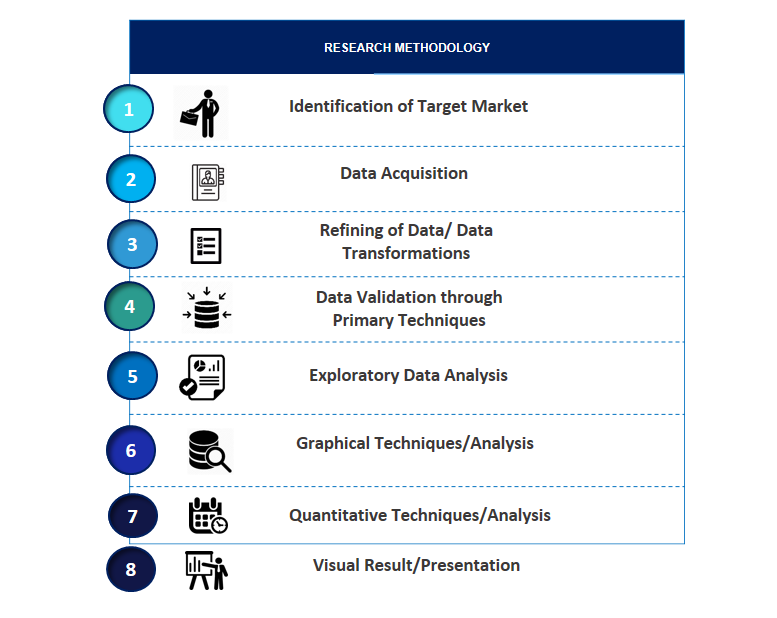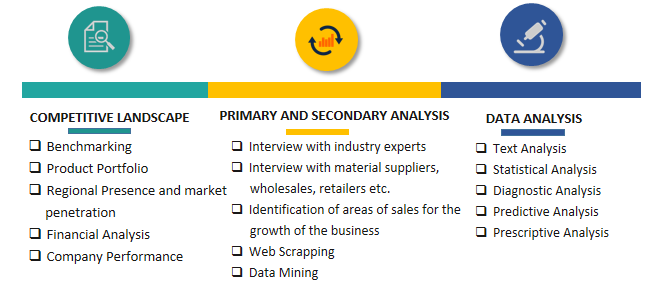
Power Over Ethernet Lighting Market Growth, Share, Trends, Demand, Challenges and Forecast 2032
Power Over Ethernet Lighting Market Size- By Offering, By Wattage, By Application- Regional Outlook, Competitive Strategies and Segment Forecast to 2032
| Published: Mar-2023 | Report ID: SEMI2312 | Pages: 1 - 234 | Formats*: |
| Category : Semiconductor and Electronics | |||
- Onsemi, a firm specializing in intelligent power and sensing technologies, has announced the June 2022 release of two complete system solutions that support the most common building automation network protocols, Power over Ethernet (PoE) and KNX.
- The NCN5140S is the first KNX Association-certified System-in-Package (SiP), facilitating the building of access and control panels.


| Report Metric | Details |
| Market size available for years | 2019-2032 |
| Base year considered | 2021 |
| Forecast period | 2022-2032 |
| Segments covered | By Offering, By Wattage, By Application |
| Regions covered | North America, Asia-Pacific, Latin America, Middle East & Africa and Europe. |
| Companies Covered | ALLNet GmbH, Axis Lighting, Cisco Systems, H.E. Williams, Herbert Waldmann GmbH & Co. Kg, Hubbell Inc., Ideal Industries, NETGEAR, Prolojik, Silvertel, Ubiquiti Networks Inc. , Wipro Lighting |
- Component Manufacturers
- Semiconductor Vendors
- System Integrators
- Manufacturing Companies
- Research Institutes and Organizations
- Technology Standards Organizations
- Others
| By Offering: |
|
| By Wattage: |
|
| By Application: |
|
- Global Power Over Ethernet Lighting Market Size (FY’2022-FY’2032)
- Overview of Global Power Over Ethernet Lighting Market
- Segmentation of Global Power Over Ethernet Lighting Market By Offering {Hardware (LED Luminaries, Lighting Controls) , Software and Services}
- Segmentation of Global Power Over Ethernet Lighting Market By Wattage (Above 25 Watt, Up to 25 Watt)
- Segmentation of Global Power Over Ethernet Lighting Market By Application (Commercial, Industrial, Residential, Others)
- Statistical Snap of Global Power Over Ethernet Lighting Market
- Expansion Analysis of Global Power Over Ethernet Lighting Market
- Problems and Obstacles in Global Power Over Ethernet Lighting Market
- Competitive Landscape in the Global Power Over Ethernet Lighting Market
- Impact of COVID-19 and Demonetization on Global Power Over Ethernet Lighting Market
- Details on Current Investment in Global Power Over Ethernet Lighting Market
- Competitive Analysis of Global Power Over Ethernet Lighting Market
- Prominent Players in the Global Power Over Ethernet Lighting Market
- SWOT Analysis of Global Power Over Ethernet Lighting Market
- Global Power Over Ethernet Lighting Market Future Outlook and Projections (FY’2022-FY’2032)
- Recommendations from Analyst
1.1. Scope of the report1.2. Market segment analysis
2.1 Research data source2.1.1 Secondary data2.1.2 Primary data2.1.3 SPER’s internal database2.1.4 Premium insight from KOL’s2.2 Market size estimation2.2.1 Top-down and Bottom-up approach2.3 Data triangulation
4.1. Driver, Restraint, Opportunity and Challenges analysis4.1.1 Drivers4.1.2 Restraints4.1.3 Opportunities4.1.4 Challenges4.2. COVID-19 Impacts of the Global Power Over Ethernet Lighting Market
5.1. SWOT analysis5.1.1 Strengths5.1.2 Weaknesses5.1.3 Opportunities5.1.4 Threats5.2. PESTEL analysis5.2.1 Political landscape5.2.2 Economic landscape5.2.3 Social landscape5.2.4 Technological landscape5.2.5 Environmental landscape5.2.6 Legal landscape5.3. PORTER’S five forces analysis5.3.1 Bargaining power of suppliers5.3.2 Bargaining power of Buyers5.3.3 Threat of Substitute5.3.4 Threat of new entrant5.3.5 Competitive rivalry5.4. Heat map analysis
6.1 Global Power Over Ethernet Lighting Market Manufacturing Base Distribution, Sales Area, Product Type6.2 Mergers & Acquisitions, Partnerships, Product Launch, and Collaboration in Global Power Over Ethernet Lighting Market
7.1 Hardware
7.1.1 LED Luminaries7.1.2 Lighting Controls
7.2 Software and Services
8.1 Above 25 Watt8.2 Up to 25 Watt
9.1 Commercial
9.2 Industrial9.3 Residential9.4 Others
10.1 Global Power Over Ethernet Lighting Market Size and Market Share by Region (2019-2025)10.2 Global Power Over Ethernet Lighting Market Size and Market Share by Region (2026-2032)10.3 Asia-Pacific10.3.1 Australia10.3.2 China10.3.3 India10.3.4 Japan10.3.5 South Korea10.3.6 Rest of Asia-Pacific10.4 Europe10.4.1 France10.4.2 Germany10.4.3 Italy10.4.4 Spain10.4.5 United Kingdom10.4.6 Rest of Europe10.5 Middle East and Africa10.5.1 Kingdom of Saudi Arabia10.5.2 United Arab Emirates10.5.3 Rest of Middle East & Africa10.6 North America10.6.1 Canada10.6.2 Mexico10.5.3 United States10.7 Latin America10.7.1 Argentina10.7.2 Brazil10.7.3 Rest of Latin America
11.1 ALLNet GmbH11.1.1 Company details11.1.2 Financial outlook11.1.3 Product summary11.1.4 Recent developments11.2 Axis Lighting11.2.1 Company details11.2.2 Financial outlook11.2.3 Product summary11.2.4 Recent developments11.3 Cisco Systems.11.3.1 Company details11.3.2 Financial outlook11.3.3 Product summary11.3.4 Recent developments11.4 H.E. Williams11.4.1 Company details11.4.2 Financial outlook11.4.3 Product summary11.4.4 Recent developments11.5 Herbert Waldmann GmbH & Co. Kg11.5.1 Company details11.5.2 Financial outlook11.5.3 Product summary11.5.4 Recent developments11.6 Hubbell Inc.11.6.1 Company details11.6.2 Financial outlook11.6.3 Product summary11.6.4 Recent developments11.7 Ideal Industries11.7.1 Company details11.7.2 Financial outlook11.7.3 Product summary11.7.4 Recent developments11.8 NETGEAR11.8.1 Company details11.8.2 Financial outlook11.8.3 Product summary11.8.4 Recent developments11.9 Prolojik11.9.1 Company details11.9.2 Financial outlook11.9.3 Product summary11.9.4 Recent developments11.10 Silvertel11.10.1 Company details11.10.2 Financial outlook11.10.3 Product summary11.10.4 Recent developments11.11 Ubiquiti Networks Inc.11.11.1 Company details11.11.2 Financial outlook11.11.3 Product summary11.11.4 Recent developments11.12 Wipro Lighting11.12.1 Company details11.12.2 Financial outlook11.12.3 Product summary11.12.4 Recent developments
SPER Market Research’s methodology uses great emphasis on primary research to ensure that the market intelligence insights are up to date, reliable and accurate. Primary interviews are done with players involved in each phase of a supply chain to analyze the market forecasting. The secondary research method is used to help you fully understand how the future markets and the spending patterns look likes.
The report is based on in-depth qualitative and quantitative analysis of the Product Market. The quantitative analysis involves the application of various projection and sampling techniques. The qualitative analysis involves primary interviews, surveys, and vendor briefings. The data gathered as a result of these processes are validated through experts opinion. Our research methodology entails an ideal mixture of primary and secondary initiatives.



Frequently Asked Questions About This Report
PLACE AN ORDER
Year End Discount
Sample Report
Pre-Purchase Inquiry
NEED CUSTOMIZATION?
Request CustomizationCALL OR EMAIL US
100% Secure Payment






Related Reports
Our Global Clients
Our data-driven insights have influenced the strategy of 200+ reputed companies across the globe.




















